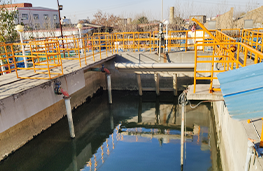If you want to ensure that your aquatic organisms stay healthy and your aquatic ecosystem functions properly, then measuring dissolved oxygen levels in water is crucial. Dissolved oxygen (DO) is the amount of oxygen that is present in the water, which is essential for aquatic life. Dissolved oxygen is also used to measure the water quality. In this article, we will discuss how to measure dissolved oxygen in water and what factors can affect the levels of DO.
Before we dive into the measurement of dissolved oxygen, it is essential to understand what it is and why it is important. Dissolved oxygen is the amount of oxygen that is present in the water, which is used by aquatic organisms to breathe. The amount of dissolved oxygen in the water can vary depending on various factors such as water temperature, pressure, and salinity.
Measuring dissolved oxygen is critical for several reasons. Firstly, it helps to determine the amount of oxygen available for aquatic organisms. Secondly, it can be used to assess the health of an aquatic ecosystem. High levels of dissolved oxygen indicate good water quality, while low levels indicate poor water quality. Therefore, measuring dissolved oxygen levels in water is essential for managing aquatic environments, including lakes, rivers, and oceans.

Several factors can affect the levels of dissolved oxygen in water, including temperature, atmospheric pressure, and salinity. Warm water can hold less oxygen than cold water, so the amount of dissolved oxygen in the water decreases as the water temperature increases. Atmospheric pressure can also affect the amount of oxygen that is dissolved in the water. Higher atmospheric pressure means that more oxygen can be dissolved in the water. Saltwater can also hold less dissolved oxygen than freshwater.
There are several methods for measuring dissolved oxygen in water. The most common method is the Winkler method, which involves adding a series of reagents to a water sample to create a chemical reaction that produces a colored solution. The intensity of the color produced is proportional to the amount of dissolved oxygen present in the water. Another method is using dissolved oxygen meters, which are electronic devices that measure the amount of oxygen present in the water.
The Winkler method is a widely used method for measuring dissolved oxygen in water. The method involves taking a water sample, adding several reagents, and then measuring the amount of oxygen produced in the reaction. Here are the steps involved in the Winkler method:
Dissolved oxygen meters are electronic devices that measure the amount of dissolved oxygen present in the water. They are easy to use and provide quick results. Dissolved oxygen meters use a probe that is inserted into the water, and the probe measures the amount of dissolved oxygen present in the water.
In conclusion, dissolved oxygen is a critical factor in maintaining the health of aquatic environments. Measuring the levels of dissolved oxygen in water can help identify any issues with water quality and ensure the survival of aquatic organisms. The Winkler method and dissolved oxygen meters are the most common methods used to measure dissolved oxygen in water. It is important to understand the factors that can affect dissolved oxygen levels, such as temperature, atmospheric pressure, and salinity, and take steps to manage them to ensure healthy aquatic environments. By measuring dissolved oxygen levels regularly and taking appropriate action, we can ensure the long-term sustainability of our aquatic ecosystems.